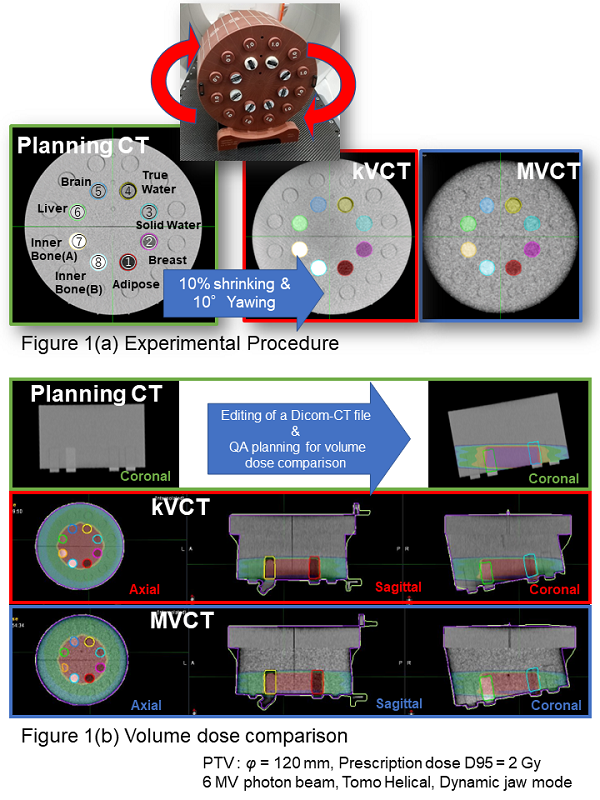Accuracy of adaptive radiation therapy with kVCT in tomotherapy: evaluation in a phantom study
PO-1933
Abstract
Accuracy of adaptive radiation therapy with kVCT in tomotherapy: evaluation in a phantom study
Authors: Masao Tanooka1, Wataru Okada2, Keisuke Sano2, Kenji Nakamura2, Yusuke Sakai2, Mayuri Shibata2, Takashi Shintani2
1Takarazuka City Hospital, Department of Radiotherapy, Takarazuka, Hyogo, Japan; 2Takarazuka City Hospital, Department of Radiotherapy, Takarazuka,Hyogo, Japan
Show Affiliations
Hide Affiliations
Purpose or Objective
The Radixact® system (Accuray, Sunnyvale, CA), a next-generation tomotherapy platform, features PreciseART® with dedicated adaptive monitoring. It is also equipped with helical computed tomography (CT) imaging with continuous rotation of the gantry and continuous movement of the couch. The purpose of this study is to compare the recently introduced helical fan-beam kilovolt CT (kVCT) with the existing megavoltage CT (MVCT) and to evaluate its accuracy in adaptive radiation therapy (ART).
Material and Methods
The recently developed ClearRT™ was used for the kVCT system and CTrue™ for the MVCT system. These imaging solutions were designed for integration with applications such as adaptive treatment delivery technology on the Radixact® system. In this study, PreciseART® was used to perform offline ART analysis. The central part of PreciseART® was the deformable image registration (DIR) algorithm. The proprietary DIR algorithm was a fast multi-modal method capable of accurate non-rigid image registration between a wide range of imaging modalities. First, plugs of various contrast densities were inserted into a cylindrical virtual water phantom (cheese phantom) acquired with the planning CT, and the contour of each plug (φ = 28 mm) was extracted to create a treatment plan. Then, simulating tumor shrinkage and deformation (10% shrinkage and 10° yaw error), image-guided radiation therapy (IGRT) using kVCT and MVCT were performed. In addition, Dice similarity coefficient (DSC) and mean distance to agreement (MDA), one of the quantitative measures of DIR accuracy, were calculated (Figure 1(a)). Finally, the volume dose (Dmean, D2%, and D98%) of each plug was compared with the planning CT, kVCT, and MVCT (Figure 1(b)).

Results
As shown in Table 1(a), for low-contrast plugs (1-6), excluding Bone, PreciseART® showed higher DSC and smaller MDA using kVCT compared to MVCT. In addition, a high degree of agreement with the planning CT was obtained. Moreover, as shown in Table 1(b), the volume dose for each plug was more consistent with the planning CT for kVCT than for MVCT. These results suggested that the improved image quality of kVCT contributes to improved ART accuracy in soft tissue (low-contrast areas).

Conclusion
In this study, the accuracy of ART using PreciseART® was demonstrated by comparing kVCT and MVCT using a standard phantom provided as a quality assurance (QA) package. Moreover, the improved low-contrast resolution of kVCT contributed to improved ART accuracy. However, the image uniformity of kVCT was inferior to that of MVCT. Therefore, further improvement of kVCT image quality and evolution of PreciseART® will lead to the development of online ART and lead to more accurate ART.